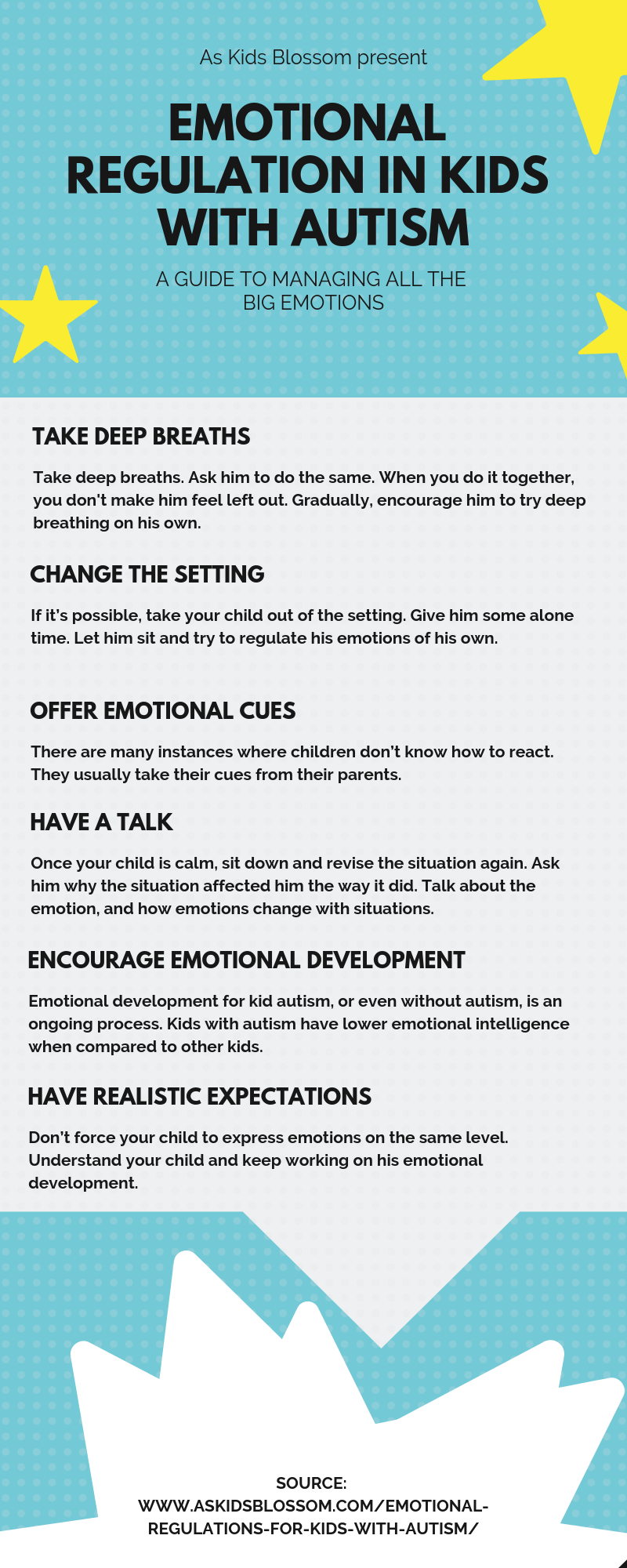When it comes to regulating emotions, almost every child faces a challenge to control all the big emotions their small bodies go to. Kids with autism have low social and language skills, which makes it a bigger challenge to bring all their emotions in control. They don’t often exhibit the same emotions that other kids too. Their reactions are usually too intense for the average child or even an adult to understand.
Emotional Regulation for Kids With Autism
Kids with autism are coping up with a lot! Their sensory organs are taking in more information than they can process. The sound of a paper airplane whooshing by might not even be heard by a normal kid, but an autism child will hear it only too well. He will be affected by that sound. He might not be able to express it, but his emotions are instantly involved.
In Kids with autism, emotions are constantly involved. We might not realize it, but our autistic kids are constantly regulating emotions. That’s why emotional regulation for kids with autism is important for both parents and teachers to understand.
Here’s how you can help with emotional regulation for kids with autism:
Take Deep Breaths
When you see your child starting to show signs of upset, take control of the situation then. If you wait for the full emotions to take over, it might be too late. Your child might be beyond the phase of soothing. So start when he starts looking mildly upset.
Take deep breaths. Ask him to do the same. When you do it together, you don’t make him feel left out. Gradually, encourage him to try deep breathing on his own. This will help him regulate his emotions on his own when you aren’t nearby.
Change the Setting
If it’s possible, take your child out of the setting. Give him some alone time. Let him sit and try to regulate his emotions of his own. You might have to pick him up and move him, if the situation is challenging to handle.
If a change of setting is not possible, a simple change in posture might work. For instance, if your child is sitting, stand up and start taking deep breaths. When you feel the situation is getting out of control, seek help.
Offer Emotional Cues
There are many instances where children don’t know how to react. They usually take their cues from their parents. The same is true for a child with autism.
So, when something happens that you think will upset your child, offer them an emotional cue before they think of their own. For instance, if food topples over, respond by saying Óh man! And laugh it off. This way you are giving them a different, a more positive emotion to use.
Have a Talk
Once your child is calm, sit down and revise the situation again. Ask him why the situation affected him the way it did. Talk about the emotion, and how emotions change with situations. Talk about emotions to get him to understand these emotions and deal with them on his own.
You might want to sit down with a stress-relieving toy or a coloring book to allow them to channel their emotions.
Encourage Emotional Development
Emotional development for kid autism, or even without autism, is an ongoing process. Kids with autism have lower emotional intelligence when compared to other kids. They face challenges in understanding and recognizing their emotions and the emotions of people around them.
A one-year-old baby might be able to look at your face and interpret your emotions, but a kid with autism won’t be able to do that accurately. But that doesn’t mean you can’t help him understand and interpret emotions at a slower pace.
Here are some everyday ideas to promote emotional development in kids with autism:
- Read and watch emotional movies. Discuss how the character shows emotions and how to interpret emotions using different cues.
- Practice with emotion cards regularly. Discuss the emotions and how you should respond to them. Discuss positive emotions and negative ones and how they affect people differently.
- Respond to emotions when you see them. If someone in the family, especially your autistic kid, expresses a positive emotion, point it out and discuss those emotions.
Have Realistic Expectations
Kids with autism have difficulty in expressing, managing and regulating emotions. Their emotion development will be slower than their peers. Don’t force your child to express emotions on the same level.
Understand your child and keep working on his emotional development.

If you enjoyed reading Emotional Regulation for Kids with Autism, you might also enjoy reading:
5 Tips to Boost Language Development in Kids with Down Syndrome
Sensory Hacks for Fidgety Kids
